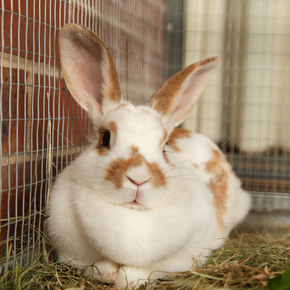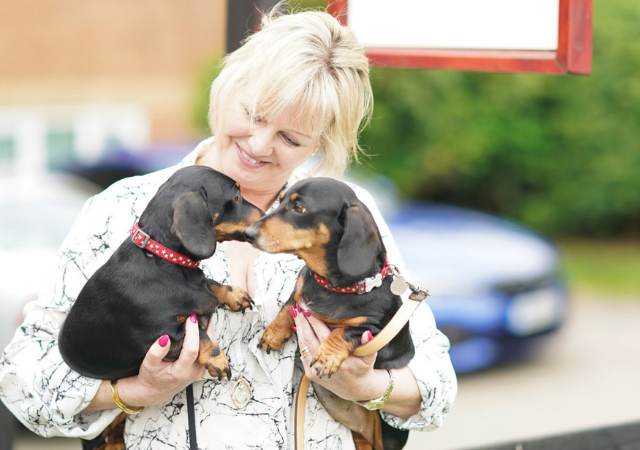
TW // Towcester Vets explains cancer risk to unneutered female rabbits
October 14, 2022
Trigger Warning – This article contains subject matter that some readers might find upsetting.
As Pet Cancer Awareness Month is in November, the vets at our Towcester surgery are sharing their knowledge on the subject of uterine tumours in rabbits. Our aim is to help pet owners make an informed decision about their rabbit’s reproductive care.
If you have any concerns about your rabbit’s health, get in touch with our Burcote Road team by calling 01327 350239.
About uterine tumours in rabbits
Uterine tumours (cancer of the womb) are said to be the single most common cancer affecting rabbits, even though only females can get this disease. It is extremely aggressive and quickly spreads to the lungs and other organs in the abdomen.
The reason that female rabbits are prone to cancer of the womb is due to their overactive reproductive tract. Regardless of whether they are bred from or not, female rabbits have the ability to breed exceptionally fast. As they age, this causes the uterine wall to undergo metaplasia (cells change form) and then neoplasia – which is the formation of tumours.
Rabbits at risk
All unneutered does (female rabbits) are at risk of developing uterine tumours. It is expected that around 40% of unneutered does will develop tumours by two years old; this number doubles by six years old regardless of whether the rabbit has been bred from. The only preventative treatment for cancer of the womb is neutering as this removes the uterus and therefore the possibility of this disease developing.
Rabbit neutering also helps to prevent unplanned pregnancies.
Signs of illness to watch out for
- Blood in the urine
- Bloody discharge
- Weight loss
- A swelling in the abdominal area
The above are all signs that there could be a uterine tumour present. If the cancer has spread to the lungs, you may notice coughing or breathing difficulties.
Some of the above symptoms could also be due to other health issues so it is always best to see a vet.
How we diagnose and treat cancer of the womb
Depending on the symptoms your rabbit is displaying, they are likely to need an ultrasound scan or an x-ray. An ultrasound may be able to show an abnormal growth in/on the uterus and then exploratory surgery can confirm if it is a tumour. An x-ray may be able to show secondary tumours in the lungs if they are large enough.
Treatment for uterine tumours in rabbits involves the surgical removal of the uterus and ovaries for the best chance of recovery. However, if the cancer has spread, sadly the outcome is unlikely to be positive.
At Towcester Vets, our vets will talk you through the best option for your rabbit’s ongoing care and can schedule any necessary exploratory scans or procedures.
If you are concerned about your rabbit’s health, book an appointment with any of our highly experienced vets as soon as possible by calling 01327 350239.


